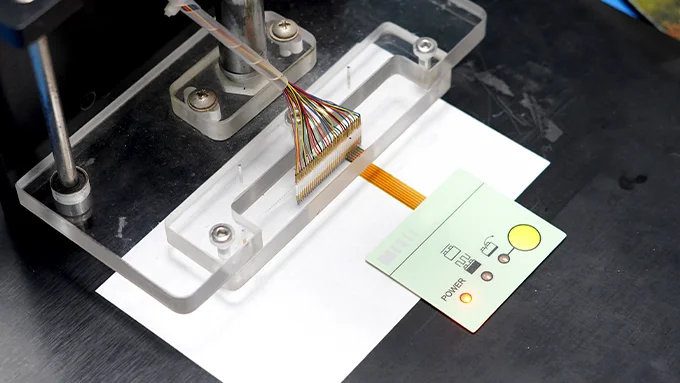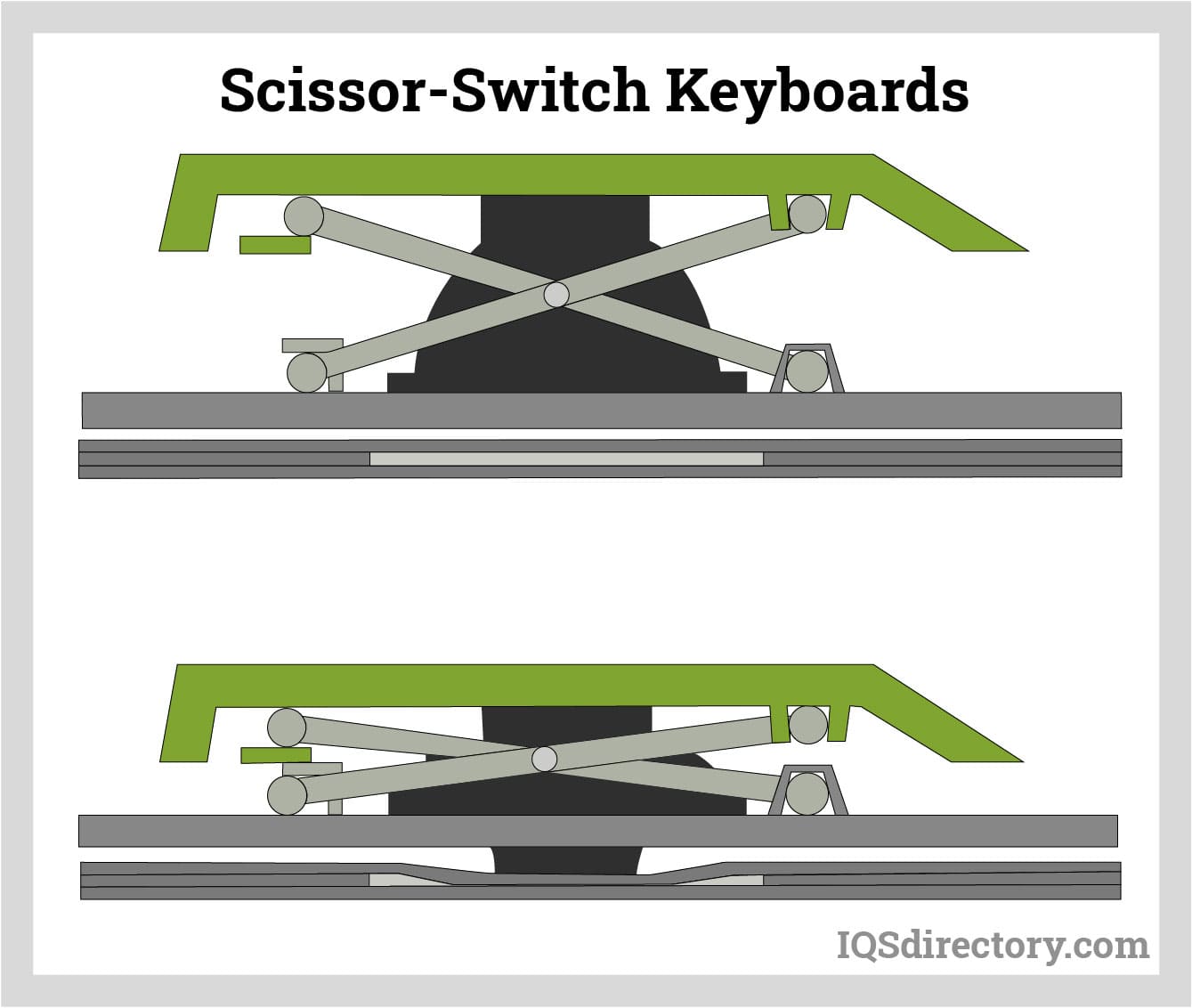Emerging trends in membrane switch development
The Production Process Behind Membrane Layer Switch Over: What You Need to Know
The production process behind membrane switches combines cautious layout, product choice, and high quality control. It begins with understanding the details of membrane layer button layout and advances via numerous stages, consisting of material options and printing methods. Each phase plays a necessary function in making certain capability and durability. The complexities of layer building and construction and the extensive testing requirements may reveal insights that are not right away apparent. What exists past these foundational elements?
Recognizing Membrane Change Style
Although membrane layer switches may appear simple initially glance, their style involves complex factors to consider that assure performance and resilience. The style procedure starts with a complete understanding of individual requirements, including the user interface's intended application and environmental aspects. Functional designs is a crucial element, as the layout must facilitate ease of use while making certain that responsive responses satisfies user expectations.Moreover, the layering of parts, such as graphic overlays, sticky layers, and conductive traces, should be specifically crafted. membrane switch. This layered configuration not just affects the switch's responsiveness however likewise influences its long life. Focus is offered to the sealing strategies used to shield against moisture and dirt, which could compromise performance. In addition, layout considerations encompass looks, where color design and visual clarity improve customer experience. Ultimately, the style of membrane changes balances functionality, user experience, and sturdiness, guaranteeing that they fulfill the needs of different applications properly
Products Made Use Of in Membrane Change Production
When picking materials for membrane switch manufacturing, it is vital to consider both efficiency and toughness. The primary products include polyester and polycarbonate films, which provide versatility and stamina. These movies are commonly coated with sticky to guarantee correct bonding to substrates. Conductive inks, normally made up of silver or carbon, are vital for producing electrical connections within the button, allowing for reputable operation.Additionally, a safety layer, such as a tough coat, is frequently applied to boost scrape resistance and longevity. The choice of backing material, such as acrylic or foam, can considerably impact the switch's responsive feeling and general customer experience. Numerous ecological variables, consisting of temperature and humidity, need to direct product choice to assure peak efficiency in particular applications. Eventually, the right mix of products adds to the membrane layer switch's capability and life-span, making educated options important for producers.
The Printing Refine: Creating Graphics and Text
The printing process in membrane layer button production plays a significant function in producing top quality graphics and message. Different visuals style strategies are used to assure aesthetic charm and capability, while mindful ink selection techniques are crucial for longevity and efficiency. Comprehending these components is essential for achieving ideal results in membrane layer switch design.
Graphic Style Techniques
Graphic layout methods play an important duty in the printing process of membrane layer switches, as they specify just how graphics and text will inevitably appear on the final product. Efficient visuals design involves the critical use fonts, colors, and formats to improve readability and aesthetic charm. Developers frequently utilize vector graphics for scalability, ensuring that images stay sharp at various dimensions. In addition, focus to comparison and alignment is important, as it influences user communication and visual high quality. The incorporation of branding elements, such as logos, must be handled with treatment to preserve brand name integrity. Overall, thoughtful visuals design methods add substantially to the performance and appearance of membrane switches, affecting individual experience and product performance.
Ink Option Approaches
Selecting the proper ink is crucial for achieving the wanted aesthetic high quality and resilience in membrane layer switch manufacturing. Various ink kinds are used, consisting of solvent-based, water-based, and UV-curable inks. Each type supplies unique qualities, such as resistance, versatility, and attachment to ecological elements. Solvent-based inks are often preferred for their longevity and lively colors, while water-based inks are a lot more eco-friendly yet may have restrictions in bond. UV-curable inks offer rapid healing and robust efficiency. In addition, color matching methods assure that the selected inks line up with design requirements. Inevitably, the choice of ink must think about variables such as application approach, substrate compatibility, and end-use requirements to attain premium lead to membrane switch graphics and text.
Layer Building and Setting Up

Material Choice Refine
A mindful option of products is essential in the production process of membrane layer switches, as it directly influences capability and durability. The main materials used include polyester, polycarbonate, and various conductive inks. Polyester is usually favored for its excellent resistance to chemicals and abrasion, making it appropriate for severe atmospheres. Polycarbonate, on the various other hand, provides remarkable quality and effect resistance, which is valuable for applications needing visibility and toughness. Conductive inks, normally made up of silver or carbon, are crucial for creating reliable electric pathways. In addition, the choice of glue materials influences the total integrity of the button - membrane switch. Assessing aspects such as ecological direct exposure, responsive responses, and visual requirements overviews makers in choosing the ideal products for their particular applications
Layer Adhesion Techniques
Adhering layers in membrane layer navigate here button construction is an essential process that ensures capability and durability. Various attachment methods are used to secure excellent bonding between layers, which commonly consist of making you could try here use of adhesives, warm, and stress. Pressure-sensitive adhesives (PSAs) are typically utilized for their convenience of application and prompt bonding abilities. Furthermore, thermal bonding methods can be applied, where warm is used to turn on glue homes, protecting a strong bond. The option of attachment method mostly relies on the materials entailed and the specific application demands of the membrane switch. Appropriate placement and consistent application of adhesives are important to stop flaws, securing the button operates effectively throughout its desired lifespan.
Top Quality Control Steps
Ensuring quality assurance throughout the layer construction and setting up of membrane switches is important for keeping efficiency and reliability. This procedure commonly includes numerous critical measures, consisting of comprehensive evaluations at each phase of manufacturing. Producers utilize advanced screening techniques, such as peel tests and attachment analyses, to confirm the honesty of layer bonds. Furthermore, visual examinations are performed to determine any defects in printing or material incongruities. Ecological conditions, such as temperature and humidity, are thoroughly kept track of to ensure perfect curing and attachment. Normal calibration of tools assists keep accurate production standards. By carrying out these quality control actions, manufacturers can substantially decrease the risk of item failure, assuring that the final membrane layer switches satisfy the needed requirements and customer assumptions.
Evaluating and Quality Assurance Actions

Technologies in Membrane Switch Technology
As improvements in technology continue to evolve, membrane layer switches are taking advantage of cutting-edge developments that boost their performance and user experience. One remarkable development is the integration of capacitive touch technology, which permits even more responsive and user-friendly user interfaces. This change not only enhances aesthetic appeals but likewise reduces mechanical deterioration, extending the life expectancy of the switches.Additionally, advancements in graphic overlay products have caused enhanced toughness and resistance to environmental elements such as dampness and UV light. These materials currently supply enhanced clearness and illumination, further raising the aesthetic appeal.Furthermore, the incorporation of wise modern technology is transforming membrane switches over right into interactive control panels, allowing connection with IoT tools. This connectivity promotes a smooth customer experience, leading the way for applications in different sectors, from healthcare to consumer electronics. Collectively, these technologies placement membrane switches as vital parts in modern-day device design.
Frequently Asked Concerns
For how long Does the Membrane Layer Switch Over Production Refine Take?
The period of the membrane switch manufacturing process can vary considerably. Elements such as complexity, materials utilized, and production volume influence timelines, with common production ranging from a few days to several weeks for completion.
What Are the Common Applications for Membrane Switches?
Membrane layer buttons are generally made use of in numerous sectors, consisting of vehicle controls, family devices, clinical gadgets, and consumer electronics (membrane switch). Their versatility and resilience make them perfect for applications requiring user-friendly user interfaces and trusted efficiency in diverse environments
Can Membrane Switches Over Be Custom-made for Certain Needs?

What Is the Life-span of a Typical Membrane Change?
The life expectancy of a regular membrane layer button differs, but generally, it ranges from 1 their explanation to 5 million cycles. Elements such as usage, atmosphere, and material high quality considerably affect longevity and total efficiency with time.

Are Membrane Switches Eco-friendly?
The ecological friendliness of membrane switches over differs. Some products used may not be recyclable, while others can be eco-friendly. The total effect depends upon manufacturing practices and products, demanding cautious consideration during option and disposal. The manufacturing process behind membrane layer changes combines careful layout, product selection, and top quality control. It starts with understanding the details of membrane layer switch layout and advances through numerous stages, consisting of material selections and printing methods. When selecting products for membrane button manufacturing, it is essential to consider both performance and longevity. A cautious option of materials is essential in the production procedure of membrane layer buttons, as it directly influences functionality and sturdiness. The choice of adhesion method greatly depends on the materials entailed and the certain application requirements of the membrane layer switch.